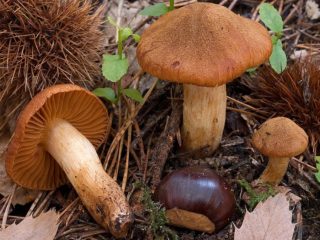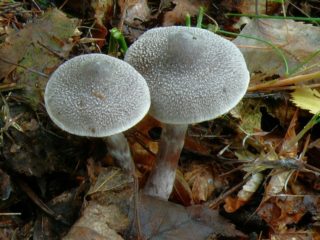Content
The blue cobweb, or Cortinarius salor, belongs to the Cobweb family. Found in coniferous forests, exclusively in late summer and early autumn, in August and September. Appears in small groups.
What does the blue spider web look like?
The mushroom has a characteristic appearance. If you know the main signs, it is difficult to confuse it with other representatives of the forest products.
Description of the cap
The cap is mucous, the diameter is from 3 to 8 cm, initially convex, over time it becomes flat. The color of the cap tubercle is bright blue, the center is dominated by gray or pale brown, and the edge is purple.

The cap of the spider web is closer to lilac color
Description of the leg
The plates are sparse, bluish when they appear, then turn purple. The stalk is slimy and dries out in dry climates.It has a light blue, lilac tint. The size of the leg is from 6 to 10 cm in height, 1-2 cm in diameter. The shape of the leg closer to the ground is thickened or cylindrical.

The flesh is white, bluish under the skin of the cap, and has no taste or smell.
Where and how does it grow
It grows in coniferous forests, prefers a climate with high humidity, appears near birch trees, in soil with a high calcium content. A rather rare mushroom that grows exclusively:
- in Krasnoyarsk;
- in the Murom region;
- in the Irkutsk region;
- in Kamchatka and the Amur region.
Is the mushroom edible or not?
It is of no interest to mushroom pickers, as it is not edible. It is prohibited to use it in any form. Listed in the Red Book.
Doubles and their differences
It has a strong resemblance to the violet row, as it grows in identical places, in the same soil.
The cap of the mushroom is more rounded than the cobweb, and the stem of the mushroom is smaller in height, but thicker. Many mushroom pickers, due to the strong similarity of the two species, may confuse these specimens. The row is suitable for marinades, so you need to be able to distinguish between these two types.

The size and shape of the fruiting body of the row is different from the blue web
Conclusion
Blue cobweb is an inedible mushroom that should not be added to the basket with the rest of the harvest. Carelessness during collection and subsequent preparation can lead to poisoning.








